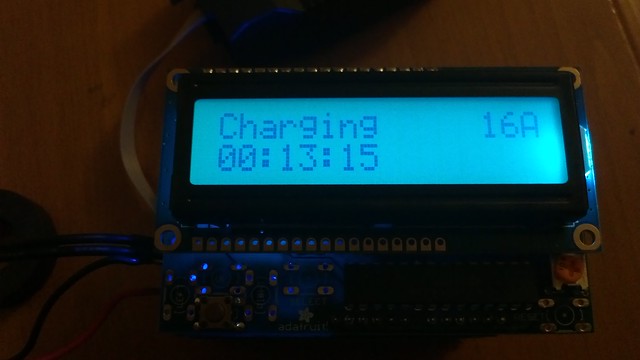mitch672
Well-known member
your making all of the commercial EVSE's seem subpar  most of them do not even implement the proper J-1772 protocol fully, never do a "diode check", never even check for "ventilation required" state etc.
most of them do not even implement the proper J-1772 protocol fully, never do a "diode check", never even check for "ventilation required" state etc.
one idea is perhaps supporting more relay outputs, for your upcomming "stuck relay" testing, you would need 2 relays controls to do that, the relays would have the 240V in series, so if one had a stuck contact, you open the secondary relay and shutdown the EVSE (and display the proper message as well, the 2nd relay de-energizes the 240V on the J-1772 handle). Along with that, if a "ventilation" required state comes up, you could activate a 3rd relay output, to turn on an exhaust fan... yes, I know with lithium packs, it will never be needed, why do it? because you can could even have an input to sense if the exhaust fan is running as well (talk about a useless feature to add just because it can be done)
could even have an input to sense if the exhaust fan is running as well (talk about a useless feature to add just because it can be done)
if you come up with another rev of the OpenEVSE PCB (or perhaps on the OpenEVSE backpack you are working on?), perhaps 3 relay control outputs in total? not absolutley required but a "nice to have" feature. Seems to be 1 TN2222A transistor, 1 1N4148 diode and 1 330 ohm resistor per relay output, and of course the terminal block as well. there would probably be space on the Arduino backpack version for this, but maybe not on the OpenEVSE PCB, as it is tiny.
one idea is perhaps supporting more relay outputs, for your upcomming "stuck relay" testing, you would need 2 relays controls to do that, the relays would have the 240V in series, so if one had a stuck contact, you open the secondary relay and shutdown the EVSE (and display the proper message as well, the 2nd relay de-energizes the 240V on the J-1772 handle). Along with that, if a "ventilation" required state comes up, you could activate a 3rd relay output, to turn on an exhaust fan... yes, I know with lithium packs, it will never be needed, why do it? because you can
if you come up with another rev of the OpenEVSE PCB (or perhaps on the OpenEVSE backpack you are working on?), perhaps 3 relay control outputs in total? not absolutley required but a "nice to have" feature. Seems to be 1 TN2222A transistor, 1 1N4148 diode and 1 330 ohm resistor per relay output, and of course the terminal block as well. there would probably be space on the Arduino backpack version for this, but maybe not on the OpenEVSE PCB, as it is tiny.





